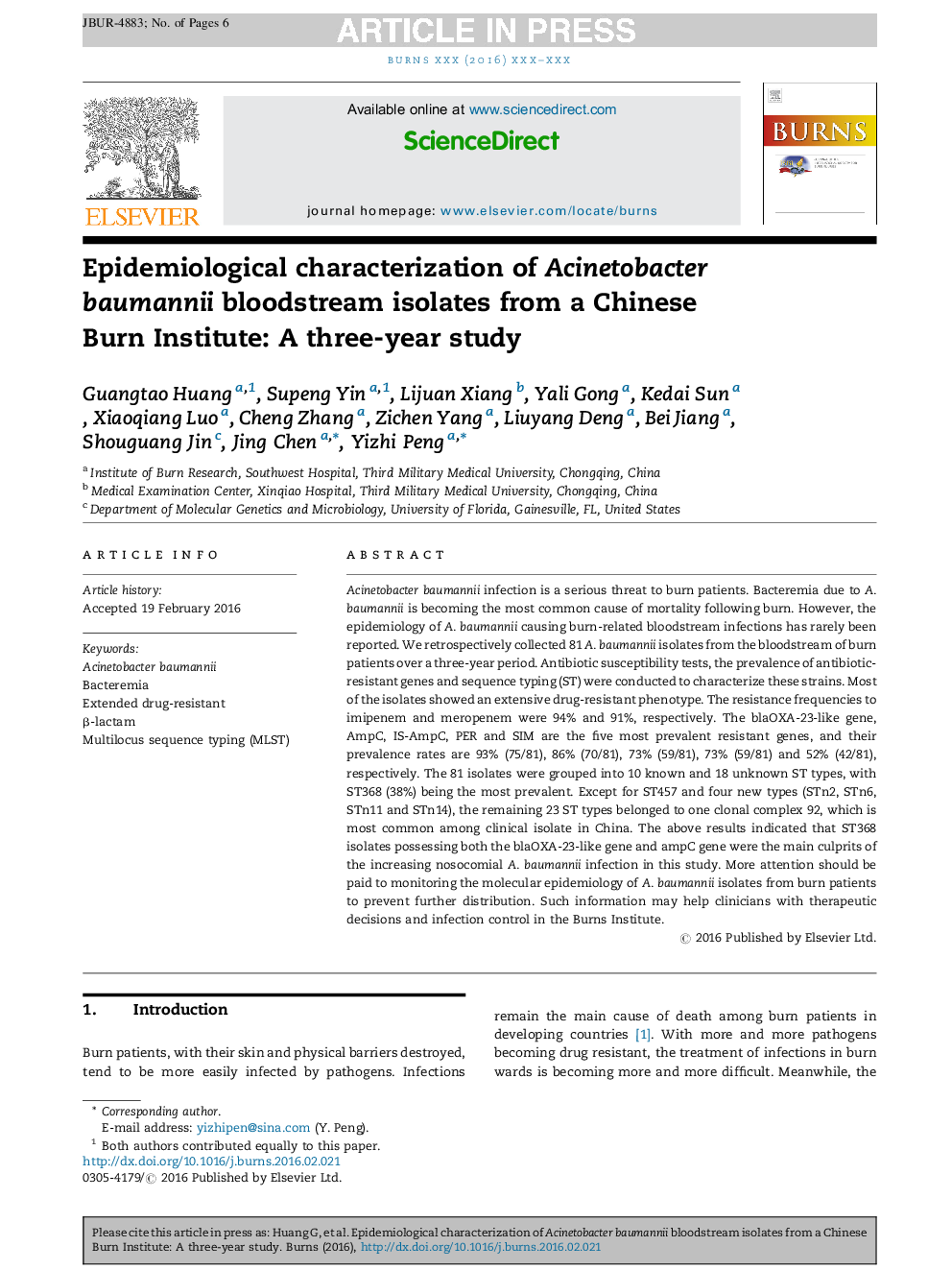| Article ID | Journal | Published Year | Pages | File Type |
|---|---|---|---|---|
| 5636251 | Burns | 2016 | 6 Pages |
Abstract
Acinetobacter baumannii infection is a serious threat to burn patients. Bacteremia due to A. baumannii is becoming the most common cause of mortality following burn. However, the epidemiology of A. baumannii causing burn-related bloodstream infections has rarely been reported. We retrospectively collected 81 A. baumannii isolates from the bloodstream of burn patients over a three-year period. Antibiotic susceptibility tests, the prevalence of antibiotic-resistant genes and sequence typing (ST) were conducted to characterize these strains. Most of the isolates showed an extensive drug-resistant phenotype. The resistance frequencies to imipenem and meropenem were 94% and 91%, respectively. The blaOXA-23-like gene, AmpC, IS-AmpC, PER and SIM are the five most prevalent resistant genes, and their prevalence rates are 93% (75/81), 86% (70/81), 73% (59/81), 73% (59/81) and 52% (42/81), respectively. The 81 isolates were grouped into 10 known and 18 unknown ST types, with ST368 (38%) being the most prevalent. Except for ST457 and four new types (STn2, STn6, STn11 and STn14), the remaining 23 ST types belonged to one clonal complex 92, which is most common among clinical isolate in China. The above results indicated that ST368 isolates possessing both the blaOXA-23-like gene and ampC gene were the main culprits of the increasing nosocomial A. baumannii infection in this study. More attention should be paid to monitoring the molecular epidemiology of A. baumannii isolates from burn patients to prevent further distribution. Such information may help clinicians with therapeutic decisions and infection control in the Burns Institute.
Related Topics
Health Sciences
Medicine and Dentistry
Critical Care and Intensive Care Medicine
Authors
Guangtao Huang, Supeng Yin, Lijuan Xiang, Yali Gong, Kedai Sun, Xiaoqiang Luo, Cheng Zhang, Zichen Yang, Liuyang Deng, Bei Jiang, Shouguang Jin, Jing Chen, Yizhi Peng,
